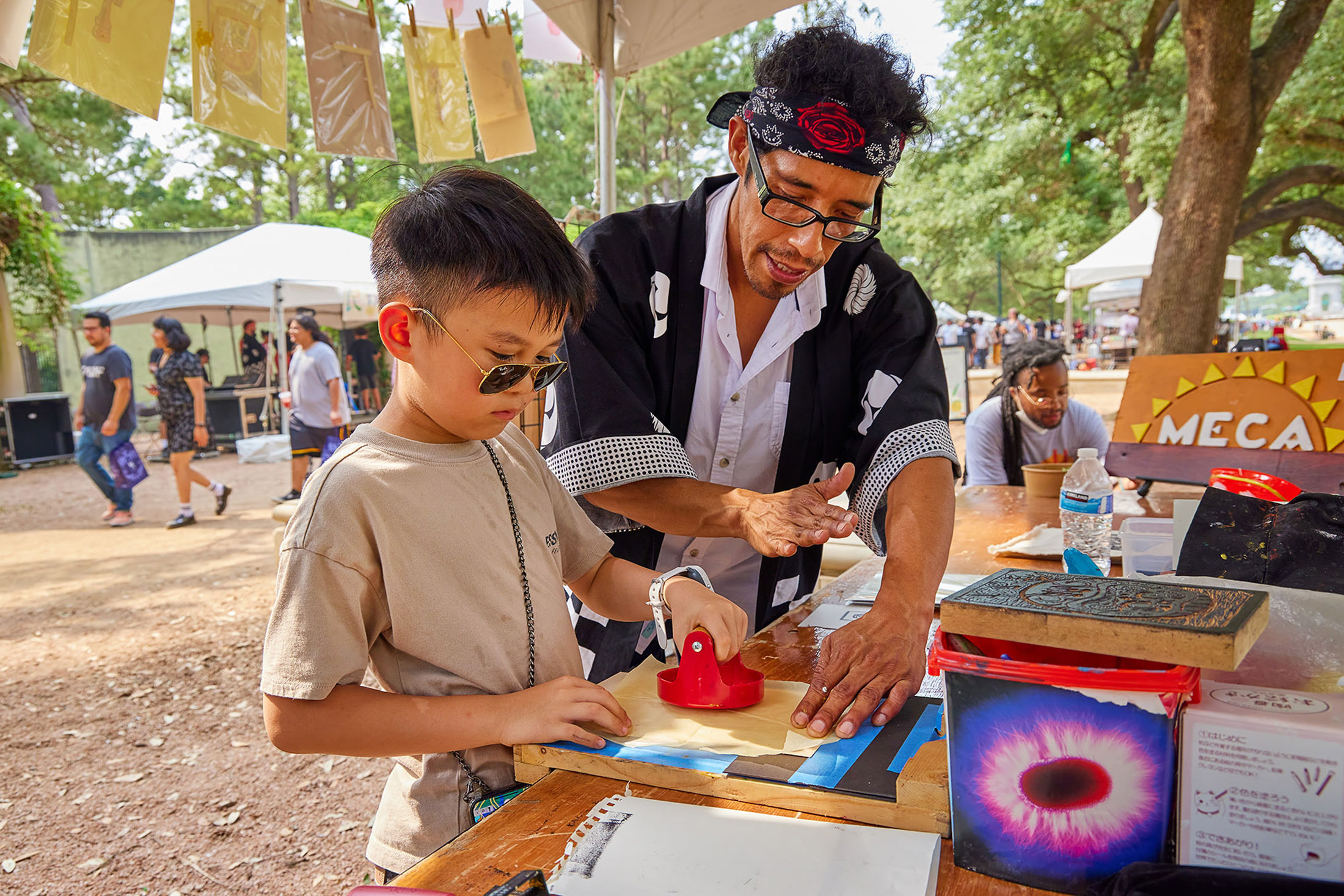The Houston Museum of Natural Science Presents a Culinary Adventure in the Amazon
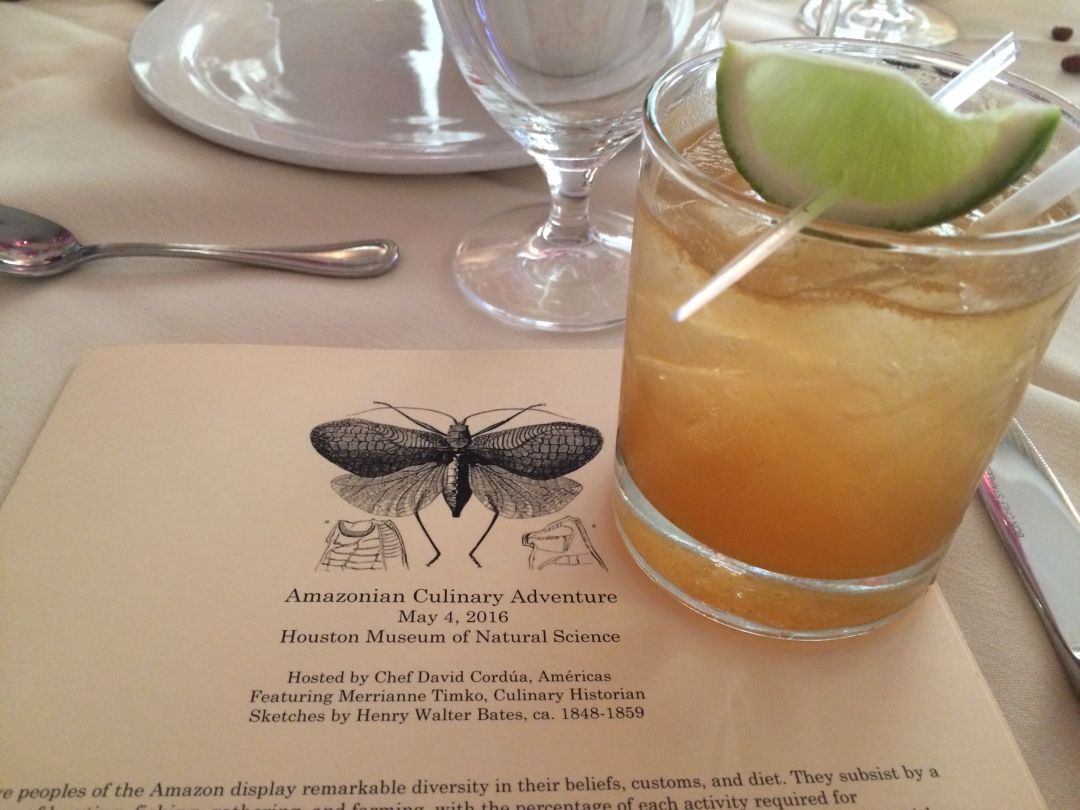
Culinary field notes by Merrianne Timko and Amy Potts, gin tonic by Américas.
Image: Alice Levitt
"Quinine was first scientifically isolated from the bark of the cinchona tree by two French pharmacists in 1820," stated culinary historian Merrianne Timko's field notes last night. She's been preparing culinary guides to pair with meals that she calls "Cultural Feasts" since 2003.
Last night's history of quinine complemented a gingery gin-tonic (the preferred term for the drink in Europe and Latin America) served at the start of the Houston Museum of Natural Science's Amazonian Culinary Adventure.
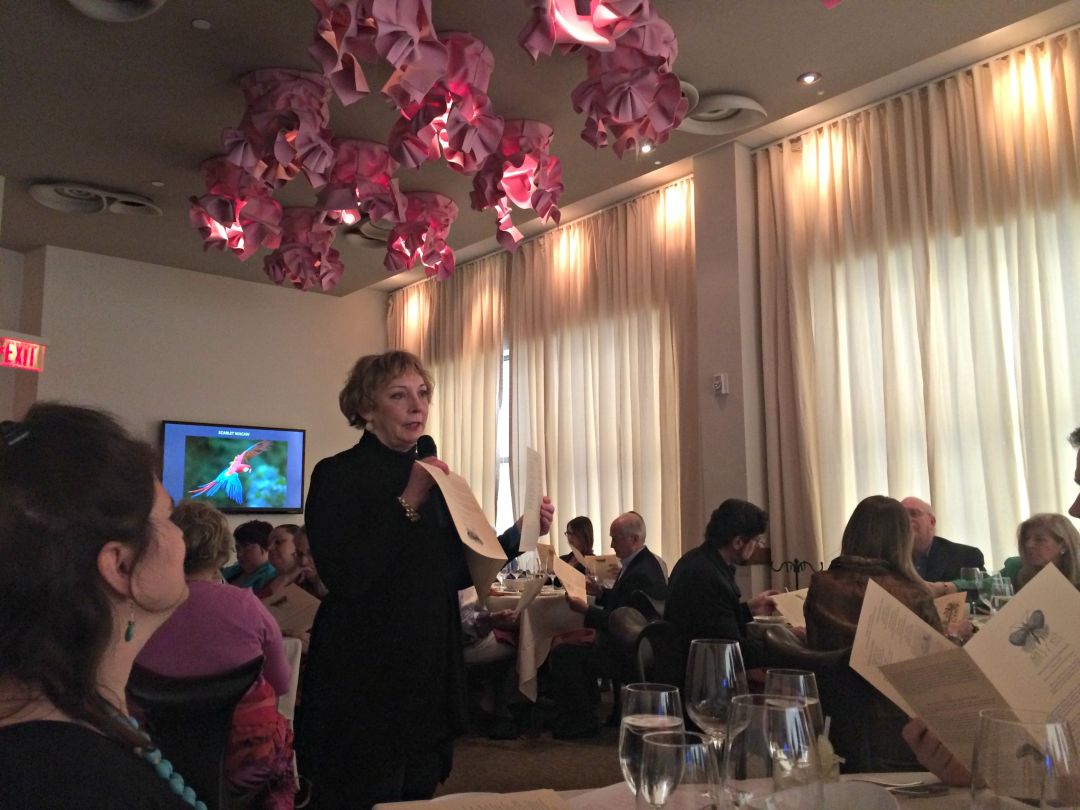
Merrianne Timko discusses Amazonian history at Américas.
Image: Alice Levitt
Over more than a decade, Timko and Amy Potts, the museum's director of adult education, have presented 30 such meals in conjunction with current exhibits. They've ranged from Qumran cuisine tied to a Dead Sea Scroll show and Ethiopian fare when Lucy made her United States debut, to meals from the time periods represented in displays on the Magna Carta and Leonardo daVinci.
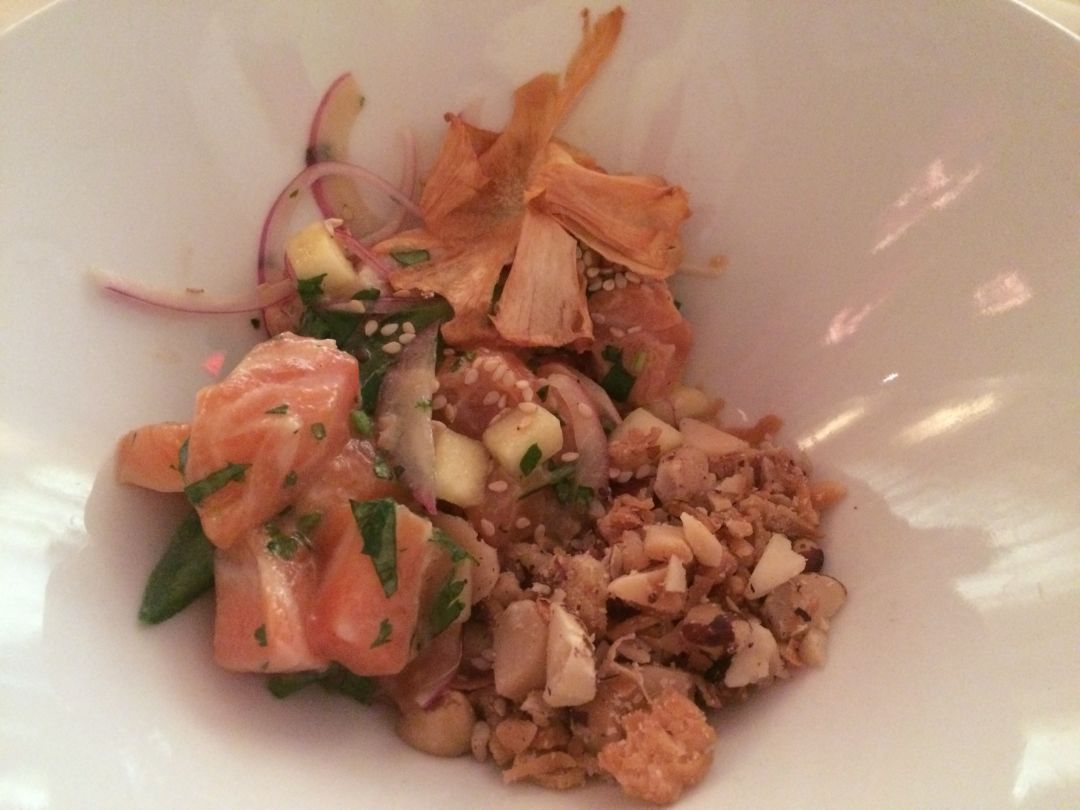
Salmon ceviche with Brazil nuts, crispy onions, peanuts, pineapple and sesame.
Image: Alice Levitt
With "Out of the Amazon: Life on the River" running until October 16, Timko directed her studies toward the foods of natives living along the South American river both before and after Europeans reared their heads in the region. As she put it in an interview before the event, "We have a menu that proceeds from raw to very well cooked—in fact, flamed—for dessert. The idea is people with limited culinary facilities are going to eat a lot of raw, then discover fire and how it influenced their cooking."
To execute that concept, Timko collaborated with David Cordúa of Américas, who has also worked with Timko on ancient Egyptian and Mayan feasts. "It's really about paying tribute to the ingredients of the Americas with new techniques," Cordúa said, summarizing his menu. He started with a bright, spicy ceviche of ingredients that natives would have found easily accessible—and edible raw.
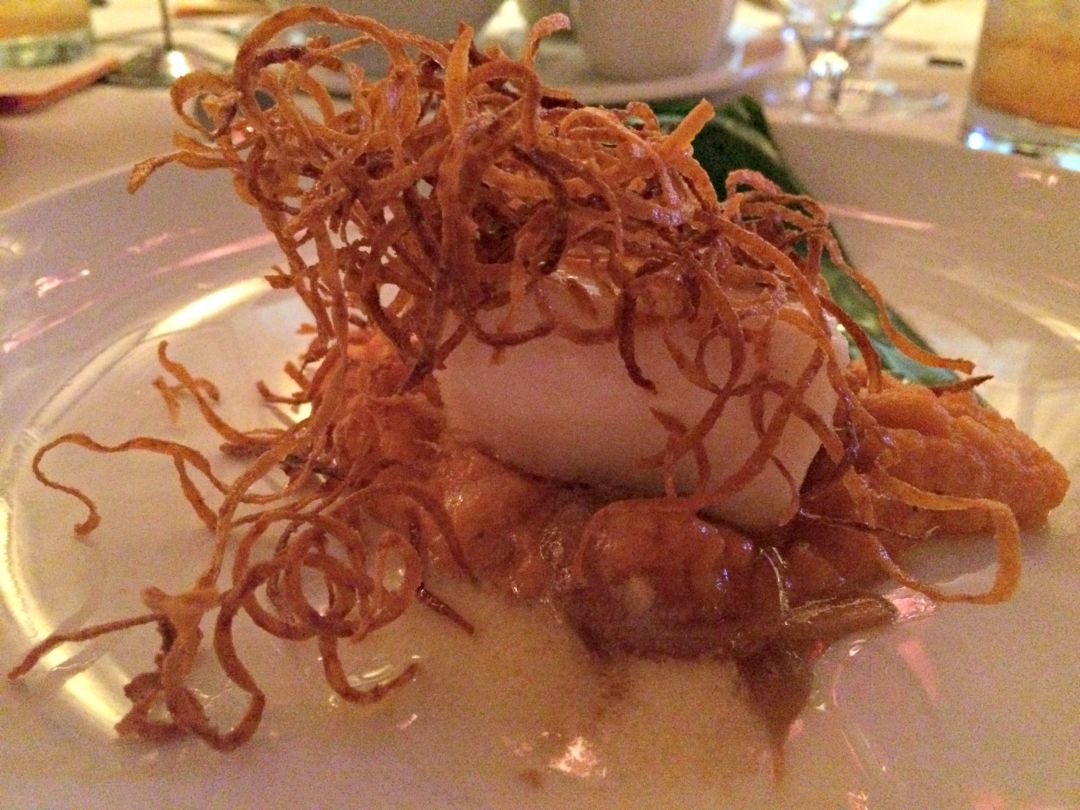
Achiote steamed paiche.
Image: Alice Levitt
Cordúa had a paiche (also known as arapaima or pirarucu) shipped from the Amazon for a course representing the dawn of cookery in the region. "It's the most terrifying animal in the Amazon," he said. He portioned the six-foot-plus, eel-like body of the fish into squares, then rubbed them with bright-red achiote paste—the same ingredient that gives cochinita pibil its crimson hue. Each piece was steamed in a banana leaf, then served over a vanilla-scented sweet potato mash and topped with fried sweets in a piquant habanero buerre blanc.
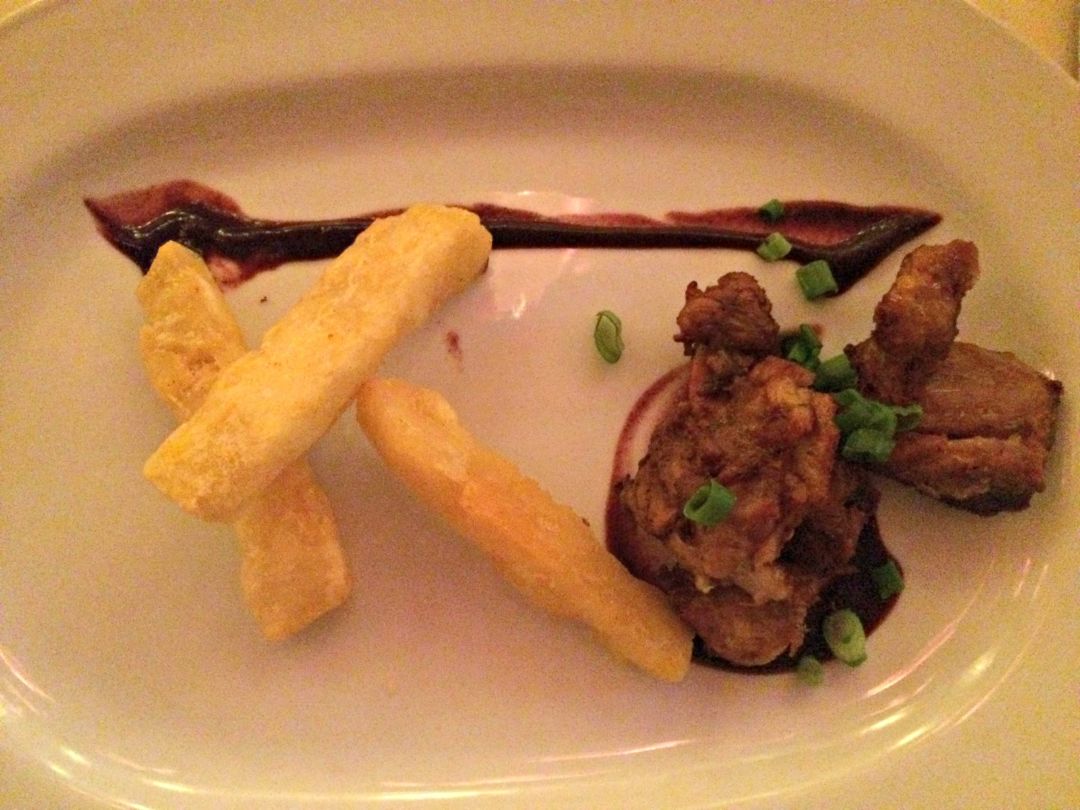
Duck carnitas with açaï gastrique.
Image: Alice Levitt
To represent the the arrival of Spaniard Francisco Orellana, the first European to sail the river, Cordúa marinated duck thighs in achiote before braising the flesh in fat and milk.
Crispy yuca fries were generously salted, though Timko reminded diners that the mineral was long a rare commodity in the Amazon due to Peruvian miners limiting trade.Historically, natives would more likely have used vegetable ash in its place. Noted superfruit açaï found its place on the menu in the form of a gastrique, whose thick, sweet-and-sour body acted as the world's fanciest ketchup for the fries.
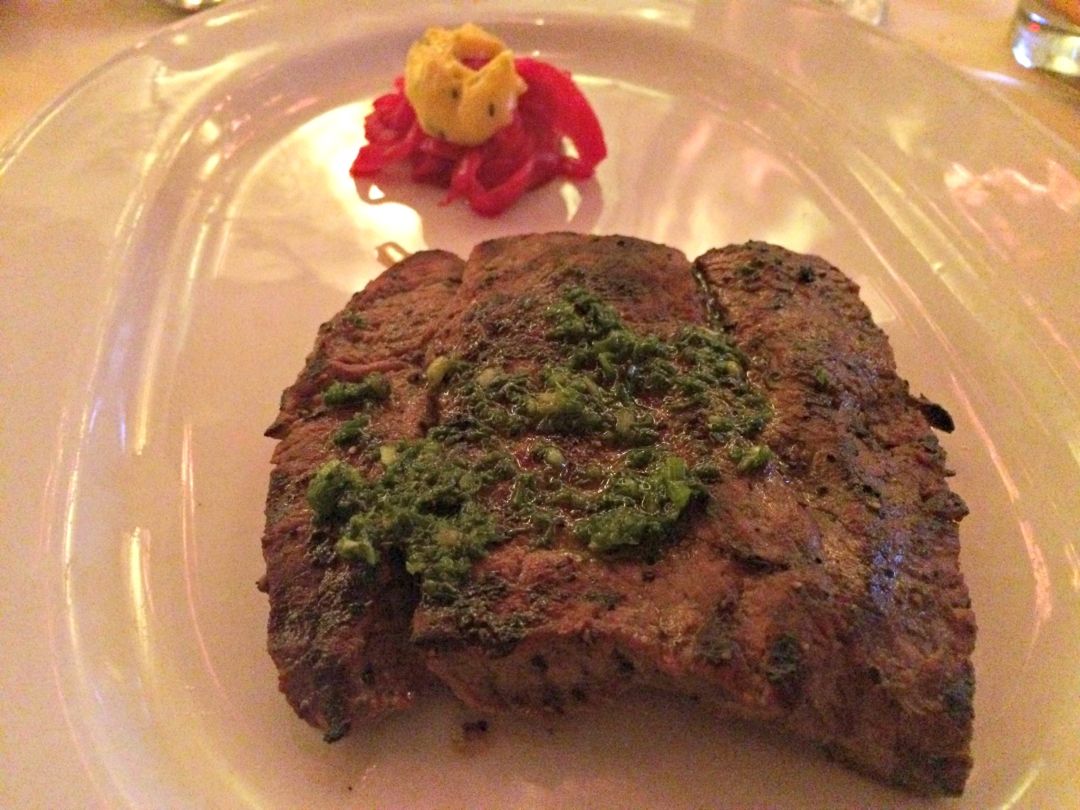
Picaña, notably presented with Béarnaise.
Image: Alice Levitt
Europeans introduced cattle and monogamy to the Amazon peoples in the 17th and 18th century. Neither was a success, though Latin America beyond the jungle is now known for its ranching.
Cordúa celebrated that with an eminently tender picaña steak in the style of his family's native Nicaragua. Covered in garlicky chimichurri, deep-pink pickled onions were covered in a blob of Béarnaise to further represent the European influence.
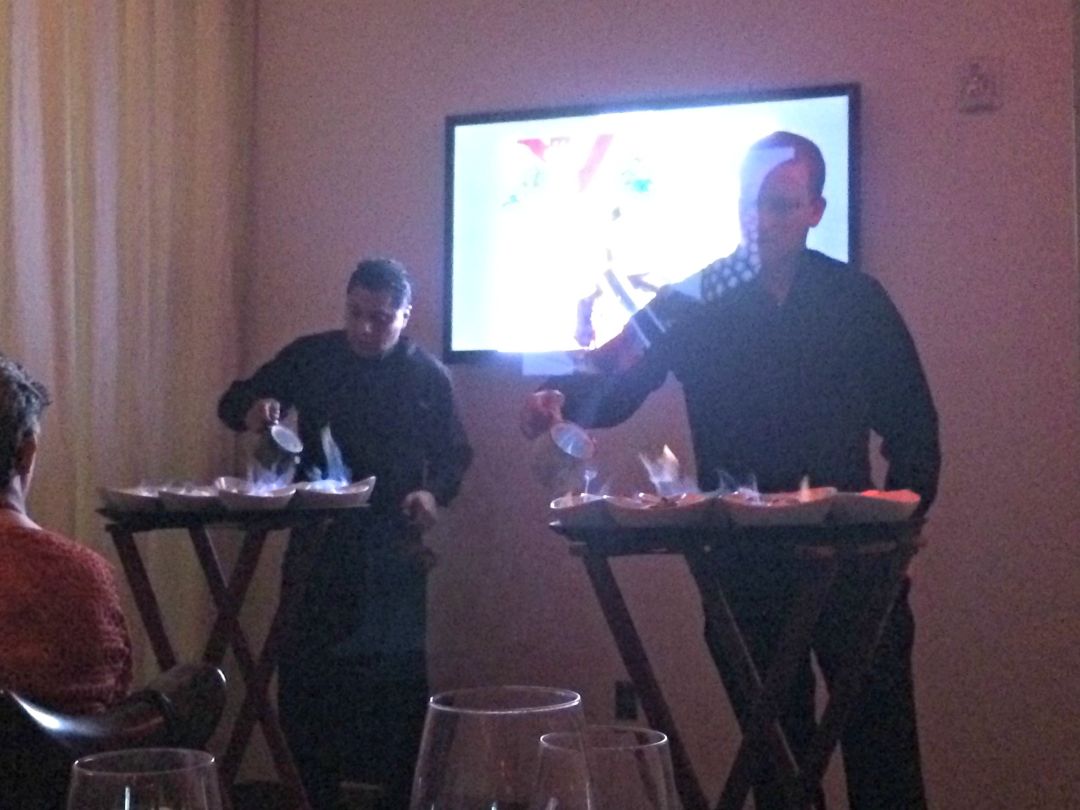
Yes, those gentlemen are pouring fire.
Image: Alice Levitt
The final course was adapted from Auguste Escoffier's recipe for Bombe Brésilienne from his 1907 Guide to Modern Cookery. The original, pineapple-and-rum-flavored dessert, similar to baked Alaska, was the dawn of a continuing trend of using Amazonian ingredients in of-the-moment western cuisine.
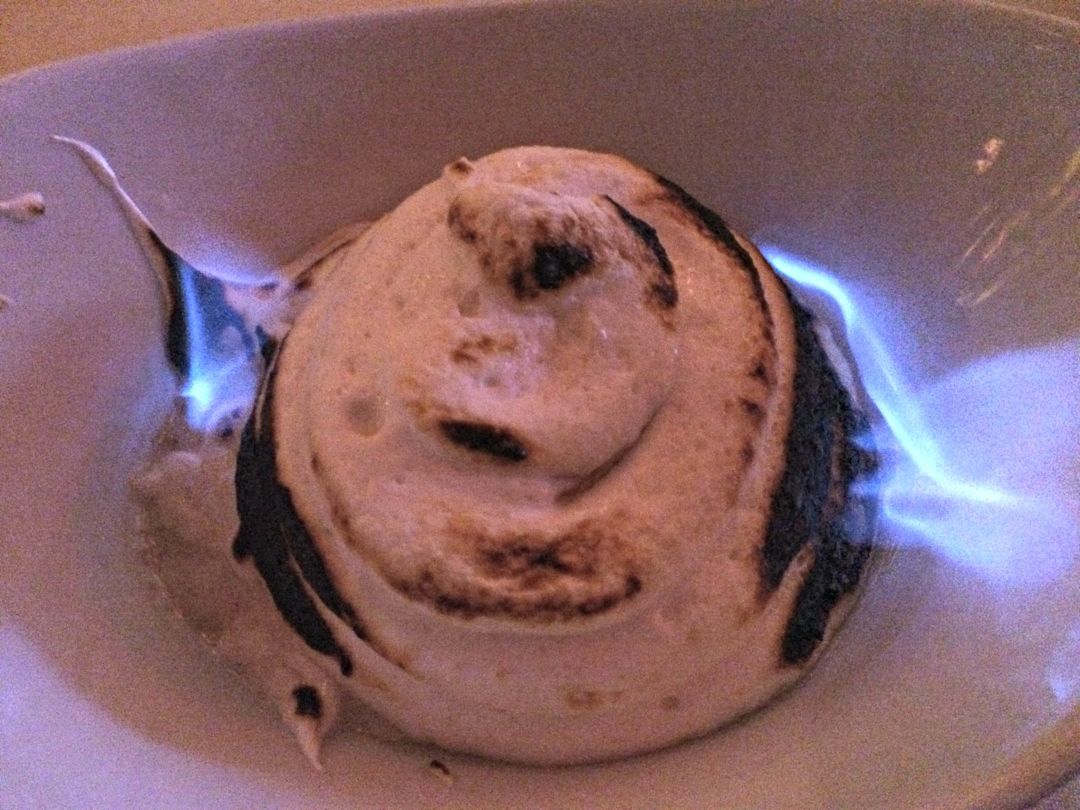
The Bomba Amazonia makes its fiery debut.
Image: Alice Levitt
Cordúa's version, dubbed the Bomba Amazonia, combined mango sorbet with vanilla and chocolate ice cream in a meringue shell served over goat's milk caramel. Chocolate, of course, is now one of the Amazon's most beloved exports, but according to Timko, there wasn't significant interest in the magical bean until the 1720s. For Escoffier's part, his love of flambéed bombes was spurred by the late 19th century's new refrigeration technologies that allowed chefs to get ice creams cold enough to withstand a bath of flaming liqueur.
What's next for Timko and her team will be determined by contracts for new exhibits at the HMNS. However, she did reveal to guests that before her next cultural feast, they'll be able to partake of the museum's annual Oktoberfest event on the history and science of beer at Saint Arnold Brewery.


